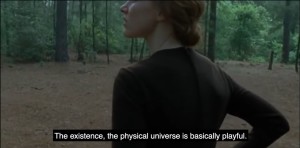Food Allergies and Intolerances
If you or your family and friends have no food allergies or intolerances, skip this article. Otherwise, enjoy!I have been meaning to catch up with a good friend for ages and we finally did lunch the week before Christmas. The friend said could I do a NutriBlast version for her low in lectins, a chemical found in most proteins and to which some people have an intolerance. So I started doing some looking into food allergies and intolerance. Came across a video by a heart specialist who gave up doing operations and got into supplements when a client got a dramatic improvement in his arteries (50% reduction in blockage) within 6 months with polyphenol rich supplements.
What is a Food Allergy?
From: http://www.allergy.org.au/patients/food-other-adverse-reactions/food-intolerance “A food allergy is an immune system reaction to food during which many irritant chemicals (such as histamine) are released into the tissues. This can result in itchy rashes, stomach upset, cough and wheeze and the more severe allergic symptoms (anaphylaxis).” Because they produce an immune system reaction, food allergies show up on allergy tests.
What is a Food Intolerance?
When, after ingesting a food, one experiences a body reaction that is non-optimal but does not involve the immune system.When people complain of symptoms such as headaches, bloating or mouth ulcers after eating, they are describing food intolerance, rather than food allergy.Food allergy and food intolerance are commonly confused, as symptoms of food intolerance occasionally resemble those of food allergy. However, the following difference should be noted. A food intolerance:
does not involve the immune system and
does not cause severe allergic reactions (known as anaphylaxis) and
does not show on allergy testing.
Food intolerance can be a difficult concept to understand and is poorly understood by by many, even some doctors. Sometimes substances within foods can increase the frequency and severity of migraine headaches, rashes (such as hives) or the stomach upset of irritable bowel. Coincidence can often make it difficult to pinpoint the exact food source as we spend many of our waking hours eating or drinking.
If you are interested, you can watch the video here. http://energyatanyage.com/160831Baus.php It’s part information, part sales pitch for his supplement.
A key takeaway from the video, avoid tofu and soy products as you would other toxins!I am not so keen on his blanket recommendation to avoid goji berries. I think the advice should be a bit more qualified as not everyone is lectin intolerant.
Here are some more interesting links:
How to eat a low oxalate diet: http://kidneystones.uchicago.edu/how-to-eat-a-low-oxalate-diet/
Foods containing salicylates: https://atpscience.com/salicylate-foods-sensitivity-intolerances-and-food-list/
Before I go any further, here are some definitions I compiled so you have a better grasp of what may ail you or yours.
Antigena: toxin or other foreign substance which induces an immune response in the body.
Antibody: a blood protein produced in response to and counteracting a specific antigen. Antibodies combine chemically with substances which the body recognizes as alien, such as bacteria, viruses, and foreign substances in the blood.Plasmathe liquid portion of the blood that has had the red and white blood cells removed.
Platelets: a component of blood whose function (along with the coagulation factors) is to stop bleeding by clumping and clotting blood vessel injuries.
Blood: Blood is a highly specialized tissue composed of more than 4,000 different kinds of components. Four of the most important ones are red blood cells (45%), white blood cells (0.1%), platelets (0.17%), and plasma (55%).Seruman amber-coloured, protein-rich liquid which separates out when blood coagulates.
Plasma that has also had the clotting factors removed.
Serology
Serology is the scientific study of serum and other bodily fluids. In practice, the term usually refers to the diagnostic identification of antibodies in the serum.
Serological: of or having to do with serology.
Agglutination: a reaction in which particles (red blood cells or bacteria) suspended in a liquid collect into clumps and which occurs especially as a serological response to a specific antibody.
Lectin: Any of a class of proteins, chiefly of plant origin (found in many grains, rice and legumes), which bind specifically to certain sugars and so cause agglutination of particular cell types. Can disrupt cell membranes initiating a cascade of immune and autoimmune events leading to cell death.
Except at wound sites, one’s blood should ideally not have clumped or agglutinated red blood cells. They should be separated and move freely. Looking at images of different people’s blood shows remarkable variations!
Oxalates: Naturally occurring molecule found in abundance in plants and humans. Not a required nutrient for people, and too much can lead to kidney stones.
In plants, oxalate helps to get rid of extra calcium by binding with it. That is why so many high-oxalate foods are from plants. In humans, it may work as a “prebiotic,” feeding good bacteria in the gut.
When we eat foods with oxalate, it travels through the digestive tract and passes out in the stool or urine. As it passes through the intestines, oxalate can bind with calcium and be excreted in the stool. However, when too much oxalate continues through to the kidneys, it can lead to kidney stones.
Calcium oxalate kidney stones are the most common type of kidney stone in the United States. The higher your levels of oxalate, the greater your risk of developing these kinds of kidney stones.
There are two ways to address this.
1. Lower your consumption of oxalate rich foods and/or
2. increase your calcium intake to give the oxalates calcium to bind to so they don’t accumulate in the liver and cause stones.
Salicylates
Organic chemicals found naturally in many herbs, vegetables, fruits, and nuts. Act as preservatives to prevent rot and disease and protect against pests. Stored in the most vulnerable plant parts; the leaves, bark, roots, skin and seeds.
Because we regularly consume salicylates, our body has to detoxify and clear away these chemicals before they accumulate. We have a threshold for symptoms. Once our salicylate load gets to around that level we start getting allergic style inflammatory reactions when we ingest them.
Vaso-active amines: Naturally occuring chemicals in certain types of food and drink and include histamine, tyramine and phenylethylamine. Produced by bacteria during fermentation, storage or decay.
Although high levels of vasoactive amines can make anyone feel unwell, most people can tolerate the amount found in a normal diet. Some people, however, will experience a reaction to ‘normal levels’, which may be due to a reduced ability to break them down in their digestive system. It is believed that this is the result of a lack of the enzyme diamine oxidase. After consuming food or drink containing high quantities of vasoactive amines, individuals may suffer ‘allergy-like’ symptoms such as headaches, rashes, flushing, itching, swelling, runny or blocked nose, irregular heartbeat, diarrhea, nausea, vomiting or abdominal pain. Symptoms may occur 30 minutes or longer after consumption and level of tolerance will vary from person to person. There are no reliable tests to diagnose vasoactive amine sensitivity, but true food allergies should be ruled out by an experienced clinician before experimenting with your diet.
So, if you have symptoms of food intolerances I have something for you to try. I took the Vegan NutriBlast and took out of the recipe the ingredients highest in FODMAPs, Lectins, Salicylates, Oxalates and Vaso-active Amines and was left with this list. Run your eye over it and if you want to try a tub, drop me a line. If you have food intlerances and are keen to try this out but there are one or more ingredients in the list you know cause problems for you, drop me a line and let me know which is a problem for you.
The asterisk after the ingredient name means it is wild crafted or organic.
Potassium
Chia Seeds
Calcium
Magnesium
Chlorella*
Pea Protein*
Spirulina*
Amaranth*
Cilantro*
Lúcuma*
Parsley*
Psyllium Husks
Quinoa*
Himalayan Rock Salt*
Gotu Kola
Kelp
Probiotics*
Choline
Fulvic Minerals*
Klamath Blue Green Algae*
Maca*
Mesquite*
Betaine
Tulsi
Vitamin C (Ascorbic Acid)
Acai Berry*
Andrographis*
Aniseed
Ashwagandha/Withania
Astragalus*
Bacopa Monnieri
Barberry Bark
Basil
Burdock Root
Camu Camu
Cats Claw*
Chaste Tree Berry
Clove
Club Moss
Coptis Root
Couch Grass*
Daikon
Damiana
Dong Quai
Dulse*
Echinacea
Fenugreek*
Frankincense
Galangal
Garcinia
Ginkgo Biloba*
Gooseberry
Grape Seed Extract
Graviola
Gymnema
Hawthorn Berry
He Shou Wu*
Horsetail
Irish Moss
Jiaogulan
Mangosteen
Maqui Berry*
Milk Thistle*
Modifilan
Nettle*
Nigella*
Noni
Nopal*
Olive Leaf*
Oregon Grape*
Passion Flower Extract
Pau d Arco
Paw Paw Leaf
Pectin-Apple
Pectin-Citrus
Pine Bark Extract
Pygeum Bark*
Red Clover
Rhodiola Rosea
Rosehips
Saw Palmetto
Sea Buckthorn
Siberian Ginseng
Tribulus*
Triphala
Willowherb
Yerba Mate*
Panax Ginseng
Vitamin E
Beta Sitosterol
Monosodium Phosphate
Vitamin D3 (Cholecalciferol)
Vitamin B3 (Niacin)
Vitamin B6 (Pyridoxine)
Vitamin B8 (Inositol)
Vitamin B5 (Pantothenic Acid)
Selenium
Vitamin B9 (Folic Acid)
Compendium of Physical Activities
This could be an interesting resource for you active person you!
https://sites.google.com/site/compendiumofphysicalactivities/home
Princeton Professor Debunks Man-made Global Warming Theory

Seven minutes it all it takes to debunk it.
(Update 1 July 2024 Link no longer works. Here’s another on the man:
https://www.npr.org/2019/03/01/698073442/heres-the-white-houses-top-climate-change-skeptic)
Indoor Cardio Workout
Why Your Life Is Not A Journey

I know I have posted this before but am doing so again with no apology for it is worth listening to again.
Some messages need to be repeated as neither the messenger nor the receiver got the message first time round.
Some lessons need to be repeated until they are learned.
Even by the teacher.
So heed this message and learn well the lesson.
Life IS a journey, the end of which we all hold in common.
But it is also a performance in which we star, play bit parts and are spectators.
If you are not enjoying your performance REWRITE YOUR SCRIPT!
https://www.youtube.com/watch?v=qHnIJeE3LAI
Marry Christmas to you and yours!
Snopes: A Fact Check on the Fact Checker
Not so accurate it seems.
https://truthkings.com/breaking-facebook-fact-checker-snopes-accused-fraud-prostitution/
You Are Responsible
Career Change
A gynecologist was getting sick of his job and decided that he needed a career change. He’d always enjoyed tinkering with engines so he thought he’d become a mechanic. So he went along to mechanics school and the final test was to strip the engine completely and reassemble it obviously back into perfect working order. So our gynecologist friend did the test and anxiously awaited the result.
The day he received the results he got quite a surprise, he got 150%! He quickly phoned the instructor and queried the mark.
The instructor said “No, no, that’s right. First I gave you 50% for stripping down the engine, a very thorough job. Next I gave you 50% for reassembling it. A fantastic job, really! Then I gave you a 50% bonus for doing it all through the muffler.”



